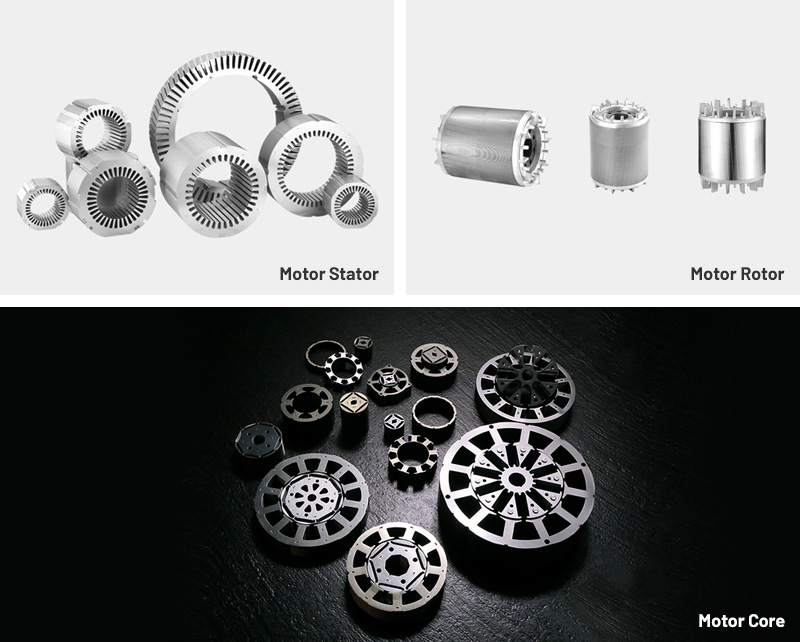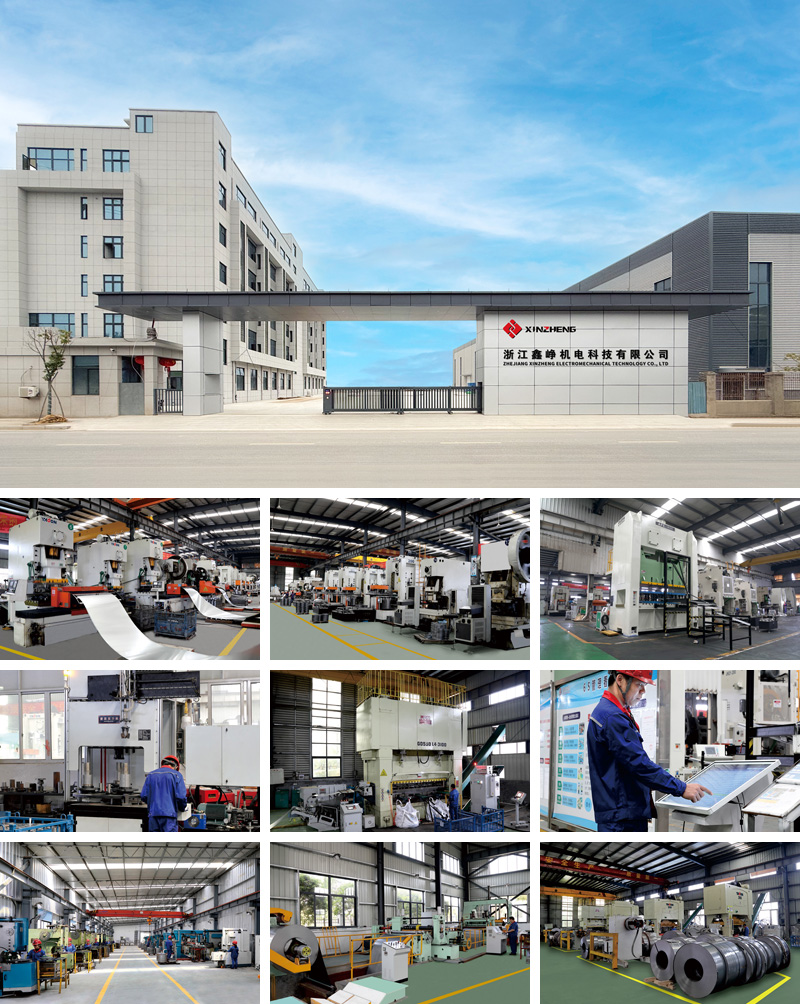Fan motors are critical components in industrial, commercial, and residential cooling systems, HVAC units, and various appliances. The performance of these motors relies heavily on the rotor’s magnetic core, making fan motor rotor laminations essential for energy-efficient and durable operation. Increasing global demand for quieter, high-efficiency fans and compliance with stringent energy regulations has amplified the importance of high-quality rotor laminations in achieving minimal energy loss, thermal stability, and reliable torque output. Manufacturers are investing in precision-engineered laminations to meet these standards, ensuring optimal performance across small and large-scale fan applications.
Rotor laminations serve as the central magnetic pathway in a fan motor. They enable torque generation while controlling magnetic flux and minimizing energy loss. The main technical principles include:
Proper lamination geometry ensures even distribution of magnetic flux, reducing the risk of localized saturation and improving overall torque consistency. Uniform flux paths also help minimize vibration and noise, critical for fan applications in residential and commercial environments.
Eddy currents produce heat and reduce efficiency. Thin, insulated laminations limit these currents, ensuring high performance and prolonging motor lifespan. In high-speed fan motors, this suppression is vital for thermal stability and operational reliability.
Fan rotors often rotate at high speeds and may operate continuously. Laminations must maintain dimensional integrity under centrifugal forces and thermal expansion. Proper stacking, bonding, and material selection contribute to long-term stability and low vibration levels.
Fan motor rotor laminations are generally manufactured from high-grade non-oriented electrical steel. Key material properties include:
Low core loss for improved energy efficiency
High magnetic permeability for optimal torque generation
Sufficient electrical resistivity to limit eddy currents
Mechanical strength to resist deformation during high-speed rotation
Lamination thickness typically ranges from 0.20 mm to 0.35 mm, depending on motor size and design specifications.
The design of rotor slots and bars affects magnetic flux distribution, heat dissipation, and torque stability. Optimized slot geometry ensures:
Even current distribution across rotor bars
Reduced torque ripple and acoustic noise
Efficient thermal management during continuous operation
High-speed stamping processes produce laminations with tight dimensional tolerances. Critical quality aspects include:
Burr-free edges to prevent insulation damage
Consistent tooth width and slot depth for uniform magnetic performance
Accurate diameter to ensure proper rotor balance
Rotor laminations are stacked and secured using interlocking, welding, or adhesive bonding. Proper stacking ensures:
Structural rigidity under centrifugal forces
Minimal vibration and acoustic noise
Accurate rotor bar alignment for consistent performance
Laminations are coated with inorganic or hybrid insulation layers to prevent interlaminar shorts and reduce eddy-current loss. Uniform coating thickness enhances electrical insulation and thermal performance, contributing to long-term reliability.
The performance of fan motor rotor laminations depends on multiple factors:
Steel Grade Consistency: Variations affect core loss and magnetic efficiency.
Dimensional Accuracy: Deviations in stamping or stacking can cause rotor imbalance.
Insulation Integrity: Inadequate coatings increase heat generation and reduce efficiency.
Stacking Precision: Misaligned laminations generate vibration, noise, and torque ripple.
Tooling Maintenance: Worn dies reduce dimensional accuracy and introduce burrs.
Attention to these factors is critical for ensuring reliable fan motor operation and compliance with energy efficiency standards.
Selecting a reliable supplier is essential for consistent lamination quality:
Material Certification: Verification of electrical steel grade and magnetic properties
Precision Tooling: Capability to produce high-accuracy laminations at scale
Quality Control: Dimensional inspection, core loss testing, and coating verification
Production Reliability: Stable output to support continuous motor manufacturing
Standards Compliance: Adherence to IEC and ISO standards for electrical steel and laminations
A robust supply chain ensures minimal production variability, higher motor efficiency, and reduced manufacturing costs.
Even with advanced manufacturing processes, common pain points exist:
Material Cost Volatility: Electrical steel prices can fluctuate, affecting production budgets
Die Wear and Burr Formation: Leads to dimensional inconsistencies and potential insulation issues
Thermal Stress: Continuous operation can degrade insulation or alter magnetic properties
Rotor Imbalance: Misaligned laminations result in vibration and acoustic noise
Efficiency Demands: High-efficiency fan motors leave little margin for manufacturing errors
Addressing these challenges requires strict process control, advanced materials, and precise tooling.
Fan motor rotor laminations are widely used in:
Residential Fans: Household cooling devices and air purifiers
Industrial Fans: HVAC systems, cooling towers, and manufacturing facility ventilation
Commercial Fans: Air handling units, server room cooling, and commercial ventilation
Automotive: Auxiliary cooling fans in vehicles and electric pumps
In these applications, high-quality rotor laminations ensure reduced energy consumption, consistent torque, and quiet operation, enhancing both performance and user experience.
New steel grades with reduced hysteresis and eddy-current losses enhance efficiency in compact fan motors.
Hybrid coatings improve thermal tolerance and long-term insulation reliability, enabling higher-speed motor operation.
Laser cutting and advanced stamping techniques offer tighter tolerances, reduced mechanical stress, and optimized magnetic performance.
Automated stacking, real-time inspection, and digital monitoring systems improve consistency, reduce defects, and support high-volume production.
Recycling of electrical steel, minimizing scrap, and adopting eco-friendly coatings are becoming industry standards in rotor lamination manufacturing.
Q1: What makes fan motor rotor laminations different from general motor laminations?
They are optimized for high-speed, compact fan motors, emphasizing low core loss, quiet operation, and stable torque.
Q2: What is the typical lamination thickness?
Commonly 0.20 mm to 0.35 mm, depending on motor size and efficiency requirements.
Q3: How critical is insulation coating?
Proper insulation reduces eddy currents, prevents overheating, and prolongs motor life.
Q4: Can fan motor rotor laminations withstand continuous high-speed operation?
Yes, precise material selection, stacking, and bonding ensure mechanical and thermal stability.
Product Category

Comprehensive Strength


Copyright © Zhejiang Xinzheng Electromechanical Technology Co., Ltd. All Rights Reserved.
This website uses cookies to ensure you get the best experience on our website.